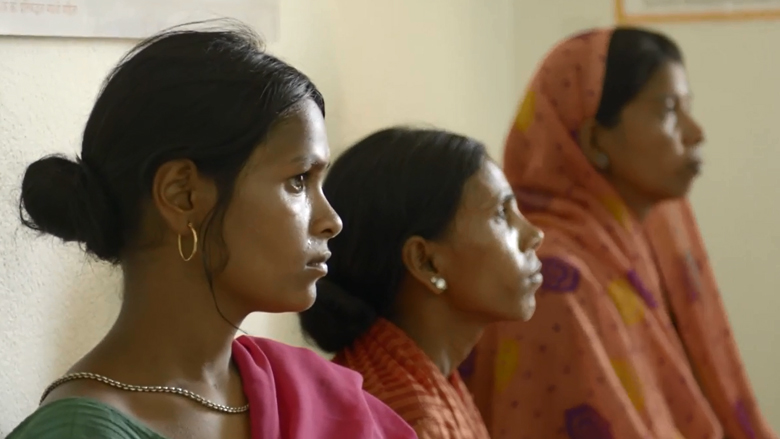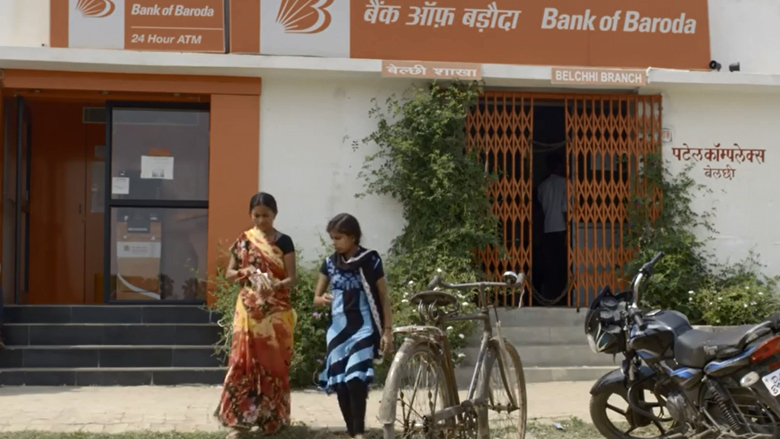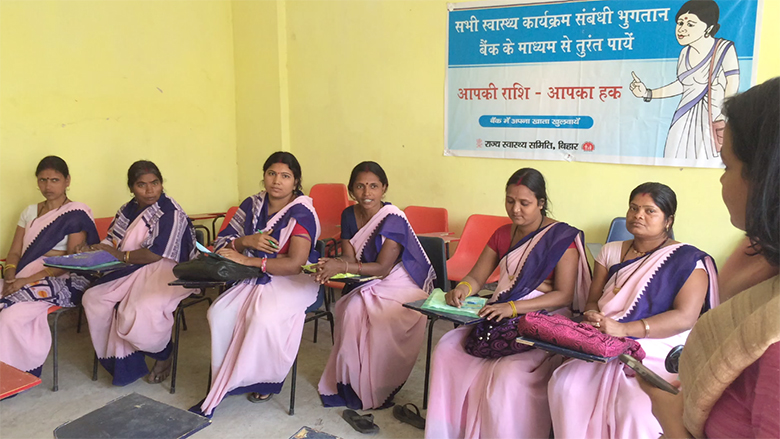“Through the system, the payment comes directly to my account. No one can take the money,” says Madhu, one of the ASHAs.
Before the system was implemented, ASHAs used to wait on average 191 days to receive payments, while women beneficiaries waited up to 58 days for their payments. A quarter of the beneficiaries also reported having to pay a “facilitation fee” to receive the funds.
Since the system has been put in place, ASHAs now receive payments within 30 days, while women beneficiaries receive their payment within two days. The incidence “facilitation” payments, or bribes, also has significantly fallen.
Moving the payment system to an electronic platform has also reduced paperwork, which has freed health professionals to focus more on providing healthcare rather than on handling administrative tasks. The time to process payments has been cut to 2.5-9 hours per month. Before health officials used to spend up to 30% of their time – between 15 to 54 hours per month -- administering payments.
“We can utilize that time in monitoring, hospital and field work,” says Archana Kumari, health manager at a local health center in Bihar.
The new system started making payments in Bihar in April 2014. By June 2015, it had processed incentive payments to the value of 11 million Indian rupees. By 2016 project will save $36 million per year in “leakages” and operational costs, which is equivalent to 18% of Bihar’s health payment flows.
Automating payments has also yielded unexpected social and economic gains, such as giving women more independence.
To receive payments, women had to get an Identification Card and open a bank account, which many didn’t have. In rural Bihar, where most targeted recipients live, less than 20% of women have an account. Opening a transaction account to receive these benefits has given women more independence as well as access to other financial services, which can help them better manage and plan their lives.
“I recently received my ID, and Madhu [one of the ASHAs] will help me open a bank account,” says Sangeeta, a young mother who delivered her baby at a local health center. “Once my bank account is open, I’m going to save my money for my children’s education and medicine.”
As part of the project, 7,500 ASHAs have so far been trained on financial awareness. Also, 450 street plays were put on in 259 villages to raise financial awareness among program beneficiaries. By 2016, all 88,000 ASHAs in the state would have received this training. The program is also training more than 2000 health officials on the new system; about a third of whom have never worked on a computer before.
Financial access and financial inclusion are prominent in the new Sustainable Development Goals. Financial access and inclusion is critical for the achievement of seven of the 17 goals. The goals of achieving good health and gender equality are among them.
Financial inclusion is also high on the national development agenda considering some 53% of India’s population is excluded from the formal and regulated financial system. India is also among the 25 priority countries included in the World Bank Group’s universal financial access initiative, whose goal is to enable all adults worldwide to have access to a transaction account by 2020.
The government of Bihar is planning to expand this health payment process across the entire state by 2016. The payment process will soon be adapted for use in Uttar Pradesh, another Indian state, where the state-wide coverage anticipated by 2019. By then, the will be processing payments worth $500 million annually and reaching 6 million beneficiaries and ASHAs in Bihar and Uttar Pradesh.



